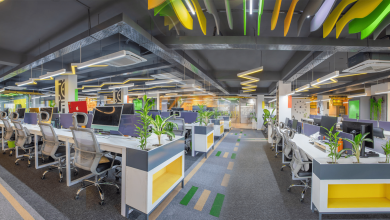The goal of the proposed memorial Museum is to tribute Atisha Dipankar Srigyan, known as the second Buddha of Buddhism. Atish Dipankar Srigyan was a renowned religious leader, scholar, writer, translator, physician, planner, social reformer, and humanitarian. He made significant contributions to the reformation of Buddhism and he propagated the Mahayana system of Buddhism. Tibetans gave him the honorary title of Second Buddha. He studied at the world-famous Nalanda Buddhist monastery and he was the principal of Vikramshil Mahavihara. He breathed his last in 1054 at Nyetang Buddhist Monastery near Lhasa city. In 1978, Atish Dipankar’s ashes were brought to Bangladesh from China. This project is proposed by Amena Akter Liza, a student at North South University. Her studio guides were: Mozaffaruddin Chowdhury and Sujaul Islam Khan.
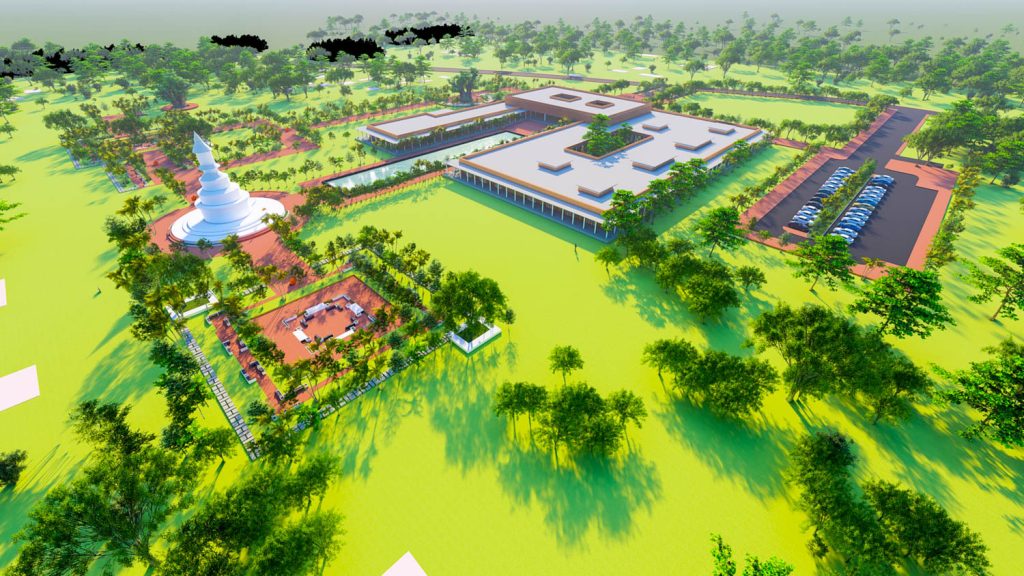
The site is located at the birthplace of Atish Dipankar Srigyan on Sukhbashpur Road, Bajrajogini, Munshiganj. There is an existing monument and a building with a small library, prayer room, and two residential rooms. The most important element of the project is the existing monument. The monument is the main focal point. The development of the design concept comes from Atish Dipankar’s lifestyle. Designer Amena Akter tried to represent Atish Dipankar and the Buddhist lifestyle in her project. She wanted to highlight Atish Dipankar’s various works, his contribution to the propagation of Buddhism, the path shown by him, the importance of his Vastu Vita as a holy land of Buddhists, and the golden history of Vikrampur. Since the monument represents Atish Dipankar, it has great significance in the project. An axis is created through the site to create a direction toward the monument. A colonnade is used to design a walkway around the building. It also gives directions toward the monument from the entry. The reflection of the monument in the water carries the image of Atish Dipankar’s transparent life.
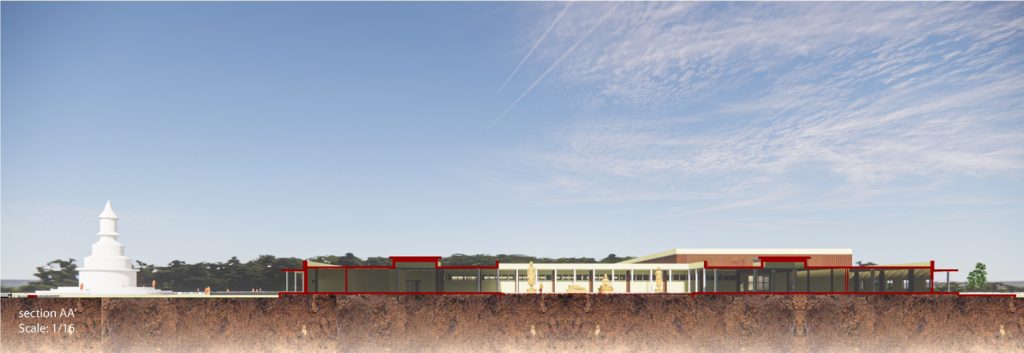
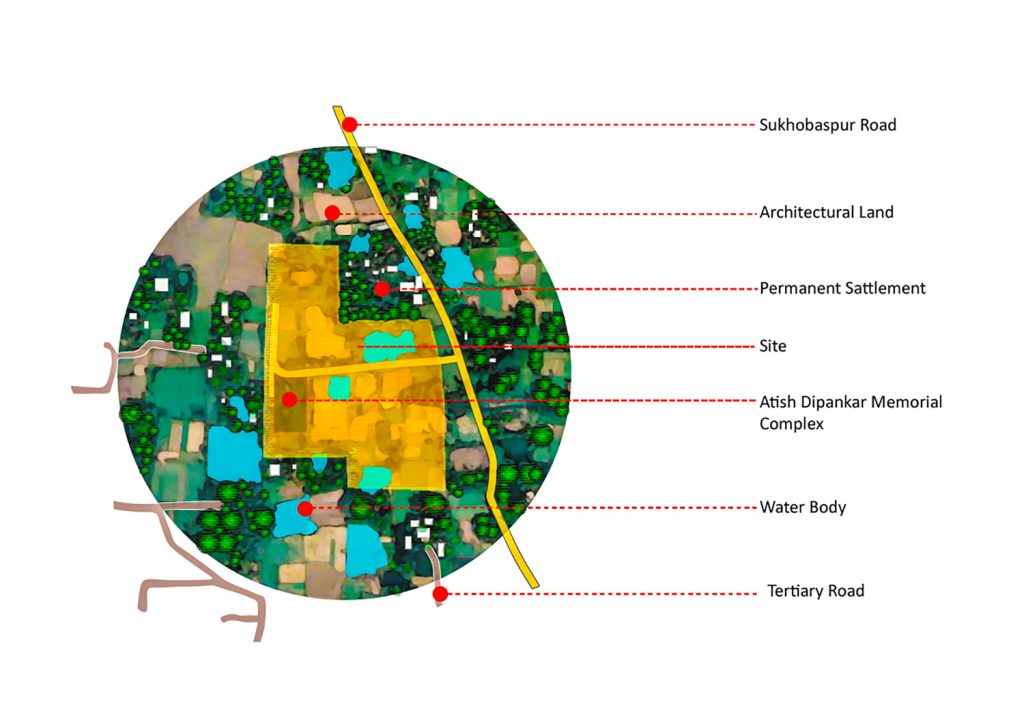
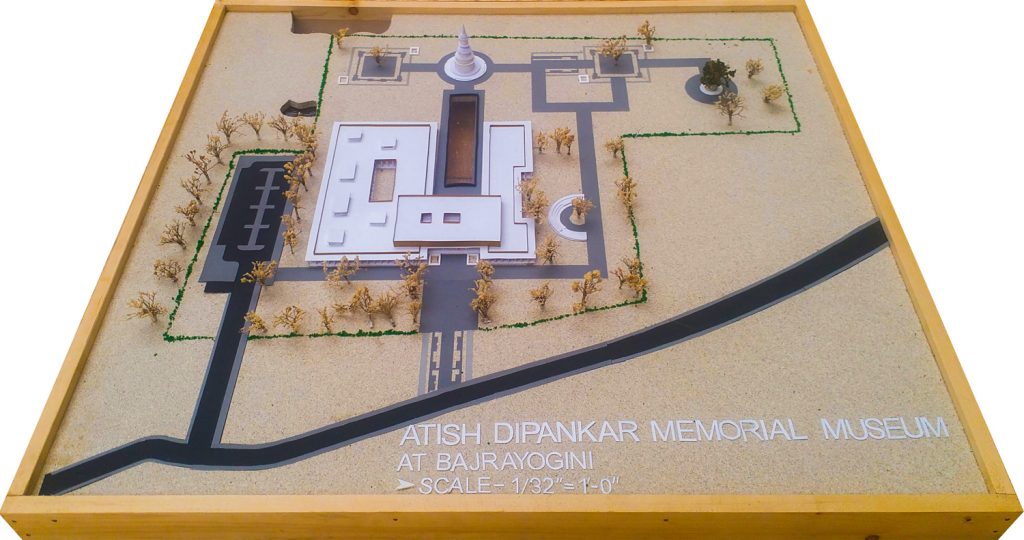
Pedestrian entry is designed so that local people and Buddhists can enter by foot. As a holy place, the natural elements are the most important, therefore, no cars are allowed to access the whole place. A visual barrier is created by designing a blog in the entry plaza so that the monument cannot be seen from outside due to visual impairment and will create interest among the visitors. A journey is depicted through Buddha’s life, the history of Buddhism, Atish Dipankar’s life, prehistoric findings, and the history and culture of Bikrampur. Through this, the visitors can learn the history of Buddhism and the thousand-year-old lost history of Bikrampur. The sculpture garden is created as a breathing space and the multipurpose hall is designed for meditation and several religious programs.

Separate accommodations for monks and archaeologists are created where Monks can stay here for prayer and meditation. Archaeologists can stay here to conduct their various archaeological research. Some natural spaces with Bodhi trees, various medicinal plants, and existing trees are implanted so that Buddhists can meditate quietly. Attaining nirvana from the concept of rebirth through meditation leads to liberation from worldly suffering. Therefore, they spend most of their time in prayer and meditation. In front of the monument, a water body is created which reflects the monument. The reflection of the monument on the water body represents the existence of Atish Dipankar and his ideals among the Buddhists.




